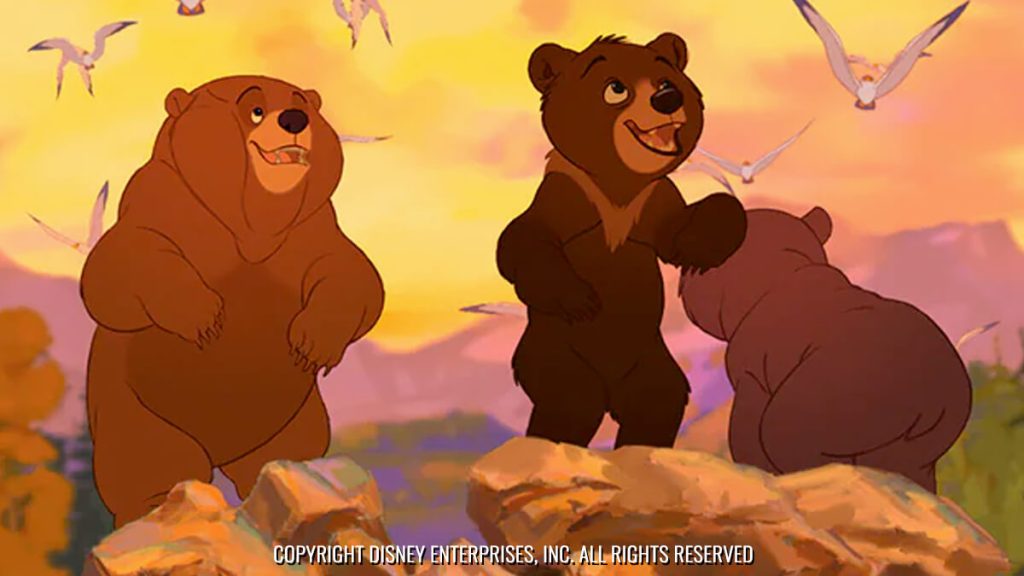I know, I know. You people just love behind-the-scenes tales about the Walt Disney Company. Articles that take you behind closed doors in Burbank to reveal how the magic is really made at the Mouse House.
Well, if those are the sort of stories that you really do enjoy, have I got a book for you. Jeffrey Stepakoff’s “Billion-Dollar Kiss: The Kiss That Saved ‘Dawson’s Creek’ and Other Adventures in TV Writing” (Gotham, May 2007) not only takes you behind-the-scenes at Disney, it also gives you an insider’s view of virtually every studio in town.
Of course, the only reason that Jeffrey is able to do this is because he’s been working in the entertainment industry since 1988. You’ll find his name in the credits for such diverse shows as “Beauty and the Beast,” “Dawson’s Creek,” “Major Dad,” “Sisters” and “The Wonder Years.” So this is a guy who really knows the ins and outs of Hollywood.
But for Disneyana fans, the main reason that you’ll want to pick up a copy of “Billion-Dollar Kiss” is the two years that Stepakoff spent working at Walt Disney Animation Studios. This book includes a surprising blunt account of how animated features came together at WDAS back in the mid-1990s. As Jeffrey remembers:
I spent 1994-96 working at Walt Disney Feature Animation. Rita Hsiao, a former “Wonder Years” assistant working full time in feature animation, recommended me to Disney. After they read my “Northern Exposure” TV spec, they asked me to develop a movie for them.
It was explained to me that Michael Eisner was very passionate about making a feature film about bears, presumably because of the possiblities of selling plush bears in the company’s retail stores. That’s pretty much all I got, bears. And of course, given the CEO’s passion for the project, I elected to find my own passion for it, which was not hard.
Actually, once I signed up I did receive some notes that had been kicked around with Eisner. There was a page that said “King Lear / Joseph with Bears” and another that said “Antigone.” These included a few paragraphs inserting bears into the classical themes. I would later learn that this was Disney’s philosophy of storytelling. Find a well-known story, borrow the bones, Disney-fy it. Hey, it worked.
Being a student of drama, I was in my element, though at one point I developed a “Jazz Singer” version of bears, which the executives loved, but it ended up a bit weird for Disney. I spent months developing characters and a story for these furry critters, which was the first iteration of the animated feature later entitled “Brother Bear,” released at the same time the ubiquitous plush bears were released in retail outlets worldwide.
While I was working on the teddy bear flick, Disney asked me to join the team that was developing “Tarzan.” They had a script that was written by a screenwriter, but the directors said they weren’t pleased with how it turned out. So, working closely with the directors and board artists, I spent nearly a year reconceiving and rewriting the film.
It was great fun applying classic story craft to hand-drawn pictures. I hung out with storyboard artists, some of the most unappreciated storytellers in our culture. Most had low six-figure salaries, long-term contracts — some were signed up for as long as seven years — and they were still required to fill out time cards.
I worked with artists who had been at Disney so long they had worked with Walt. We’d have long, laid-back discussions about the same story point for weeks. Whether or not to kill Kerchak, Tarzan’s ape dad, went on for months. The vast majority of my time was spent rewriting story sequences, little one- to two-age scenes. I’d rewrite the same page or two for weeks, over and over, whole board artists drew new pictures for the scene.
For this I was paid $6,750 a week. The studio happily paid my membership to the International Alliance of Theatrical Stage Employees Local 839 (aka the Cartoonists’ Union), which I was required to join because Disney Animation did not want the WGA anywhere near their place.
I came in at 9:30 a.m. every day and left at 5:30 p.m. every day. I ate leisurely at the shiny happy Disney commissary during my lunch break. I played lots of foosball, pinball and Ping-Pong with the board artists. I did not work weekends or holidays. There was no stress. No pressures of production. Our actors were all drawings, and unlike their live-action brethen, they caused very little mischief.
However, after a couple of years of writertopia, hanging out under the giant Sorcerer’s Hat, I realized that I missed the pressures of TV. It took 10 years for “Brother Bear” to go from page to screen. There was no pressure at Disney Feature Animation because it took a decade to make a ninety-minute story! As fun as it was, and it was a blast, I missed not only writing something and then seeing it produced days later, I missed the excitement that only comes from the pressure of production, from being on a TV staff. At the end of 1996, I was ready for it again, in a big way.
Wasn’t it great to get that sort of inside view of how WDAS operated back in the mid-1990s? Well, “Billion-Dollar Kiss: The Kiss That Saved ‘Dawson’s Creek’ and Other Adventures in TV Writing” has dozens of stories like this. Tales that take you behind-the-scenes at many of your favorite television programs.
So if you’re looking for a juicy read as the Summer of 2007 draws to a close, you should genuinely think about picking up a copy of Jeffrey Stepakoff’s latest. For “Billion-Dollar Kiss” really does have the write stuff.
